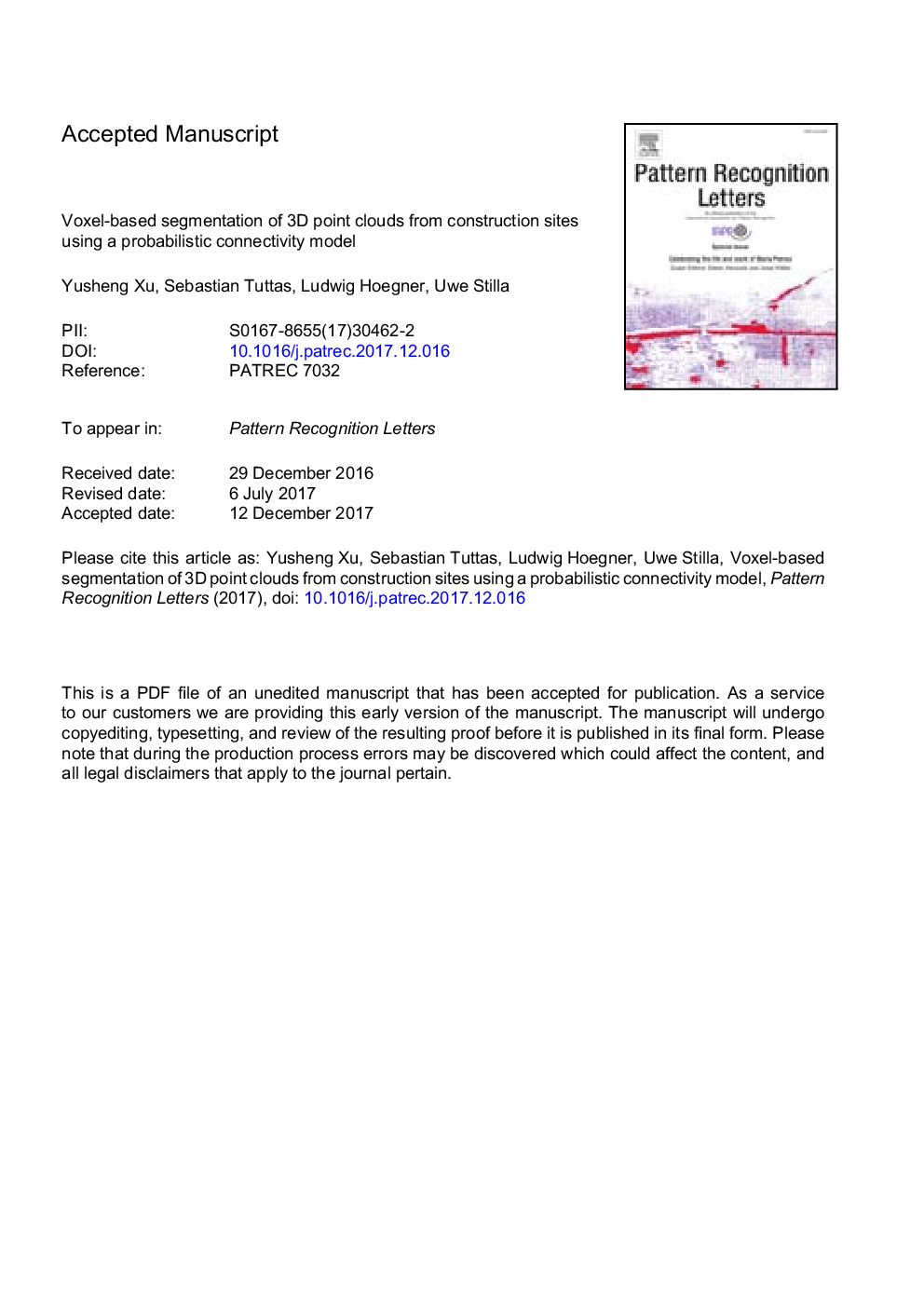| Article ID | Journal | Published Year | Pages | File Type |
|---|---|---|---|---|
| 6940709 | Pattern Recognition Letters | 2018 | 10 Pages |
Abstract
A construction site is the place of constructing buildings or infrastructure, showing very dynamic behaviors in changes and including plenty of complex objects. For recognizing building structures and other objects (e.g., workers and equipment) from 3D measurements (e.g., point clouds), segmentation is normally required. Here, we propose a voxel- and probabilistic model-based method (VPM) for point cloud segmentation, which is designed for automatically and adaptively partitioning the 3D scene. To deal with outliers and uneven points density, we organize the entire point cloud firstly by 3D cubes using an octree-based voxel structure. Then, the normal vector and centroid of the points within each voxel are calculated as the attribute of voxel. The geometric cues between voxels, including proximity, smoothness, closure, and continuity, are calculated on the basis of the attributes of voxels. Unlike conventional segmentation methods which only consider the relations between two points or voxels, the pairwise connectivity between two voxels is modeled and estimated by a probabilistic formulation on the basis of all the voxels in their local vicinities. Whether two voxels are connected or not is determined by the posterior probability deduced from the likelihood density and prior. Finally, all the connected voxels are clustered into individual segments, having meaningful geometric consistence. Our proposed method is tested by using both laser scanned and photogrammetric point clouds of different scenes. Qualitative and quantitative results reveal that our method can outperform representative segmentation algorithms, i.e., point- and voxel-based region growing, difference of normal based clustering, and LCCP, for our applications, having overall F1-measures better than 0.7 and 0.6 using different kinds of point clouds from both laser scanner and RGB images, respectively.
Keywords
Related Topics
Physical Sciences and Engineering
Computer Science
Computer Vision and Pattern Recognition
Authors
Yusheng Xu, Sebastian Tuttas, Ludwig Hoegner, Uwe Stilla,
